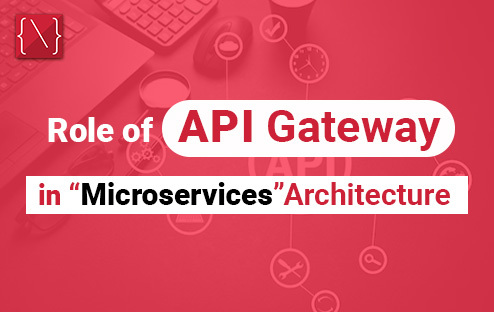
In recent years, Microservices Architecture (MSA) has become one of the most popular software architectures for developing and deploying large-scale applications. However, as applications become more complex and composed of numerous microservices, the need for effective communication and management arises. This is where the API Gateway steps in as a critical component, streamlining the complexities associated with Microservices Architecture.
Understanding Microservices Architecture:–
In the context of software development, Microservices Architecture is a paradigm that breaks down large applications into smaller, independent services. Each service operates autonomously and communicates with others through well-defined Application Programming Interfaces (APIs).
Challenges in Microservices Communication:–
The advantages of Microservices Architecture are substantial, but they come with their set of challenges:
- Service Discovery: Microservices must dynamically find and communicate with each other, necessitating a robust service discovery mechanism.
- Load Balancing: Distributing incoming requests evenly among multiple instances of a service is crucial for optimal performance and resource utilization.
- Security: Ensuring secure communication and enforcing access controls between services is a complex task in a microservices environment.
- Request Routing: Determining how to route client requests to the appropriate microservice instance becomes increasingly complex with a growing number of services.
The Role of API Gateway:–
The API Gateway plays a important role in addressing these challenges and ensuring the efficient functioning of Microservices Architecture:
- Unified Entry Point:
- Serving as a centralized entry point, the API Gateway simplifies external client interaction by providing a single interface to communicate with the microservices.
- Request Routing and Load Balancing:
- API Gateways excel in routing incoming requests to the appropriate microservices and implementing load balancing for optimal performance.
- Service Discovery:
- Integration with service discovery mechanisms enables API Gateways to dynamically locate and manage communication between microservices.
- Security and Authentication:
- By implementing robust security measures, API Gateways ensure a standardized approach to authentication and authorization across all microservices.
- Traffic Management:
- API Gateways allow for precise traffic control, enabling developers to manage the flow of requests and prioritize critical services.
- Logging and Monitoring:
- Centralized logging and monitoring capabilities of API Gateways provide valuable insights into the health and performance of microservices.
- Protocol Translation:
- Handling protocol translation, API Gateways ensure seamless communication between microservices using different protocols.
In summary, API Gateways are essential for organizations using Microservices Architecture. They make communication simpler, improve security, and provide a single entry point for external clients. Knowing and using the features of API Gateways helps developers create strong, reliable, and secure applications in a Microservices environment.
ALSO READ:- Role of UX Design in eCommerce Website Development
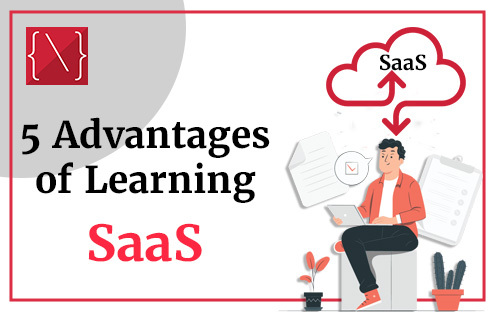
In today’s rapidly evolving technology landscape, “Software as a Service” (SAAS) has emerged as a game-changer, transforming the way businesses and individuals access, use, and manage software applications. Learning SaaS, whether you’re a seasoned IT professional or a curious newcomer, offers a plethora of advantages that can enhance your career prospects and personal growth. In this blog post, we’ll explore five compelling advantages of learning SaaS and why it’s a skill worth acquiring.
Accessibility and Convenience
One of the most significant advantages of SaaS is its accessibility and convenience. Unlike traditional software that requires installation and maintenance on individual devices, SaaS applications are hosted in the cloud. This means you can access them from anywhere with an internet connection and on any device. Learning how to use SaaS applications effectively empowers you to work, collaborate, and stay productive while on the go, whether you’re at home, in the office, or on vacation.
Cost-Efficiency
SaaS offers a cost-effective alternative to traditional software licensing. With SaaS, you typically pay a subscription fee, which covers software updates, maintenance, and customer support. This eliminates the need for costly upfront investments in software licenses, hardware, and IT infrastructure. By mastering SaaS tools, you can help your organization reduce its software-related expenses and allocate resources more efficiently.
ALSO READ: Pros and Cons of Using Windows Hosting in 2023
Scalability
The scalability of SaaS is another significant advantage. Whether you’re a small business looking to grow or a large corporation with fluctuating software needs, SaaS applications can easily adapt to your requirements. You can increase or decrease the number of user licenses, storage capacity, or other resources as your needs change. Learning SaaS allows you to harness the full potential of this scalability, ensuring your software resources align with your business demands.
Automatic Updates and Maintenance
SaaS applications are known for their seamless and automatic updates. With traditional software, you often have to manually download and install updates, which can be time-consuming and sometimes disruptive. SaaS providers handle updates and maintenance in the background, ensuring that you always have access to the latest features, improvements, and security patches. Learning how to manage SaaS applications helps you stay current with technology and safeguards your data and systems.
Collaboration and Integration
Collaboration is at the core of many SaaS applications. Learning how to use tools like Google Workspace, Microsoft 365, or Slack can significantly enhance your ability to work with colleagues and clients. SaaS applications also tend to integrate with other software, offering a seamless ecosystem for your workflow. By mastering SaaS, you can streamline your work processes, share documents more efficiently, and facilitate better communication with your team.
Conclusion
Learning SaaS is not just a skill; it’s an investment in your future. Its accessibility, cost-efficiency, scalability, automatic updates, and collaborative features make it a valuable asset for both individuals and businesses. As the technology landscape continues to evolve, proficiency in SaaS applications becomes increasingly essential for staying competitive and efficient. So, whether you’re an entrepreneur looking to streamline your operations or an IT professional aiming to expand your skill set, diving into the world of SaaS is a smart move. Embrace the advantages of SaaS, and you’ll find yourself well-equipped for the challenges of the modern digital age.
ALSO READ: Why Should You Invest in Laravel Development?

In today’s fast-paced digital landscape, having a website is no longer an option; it’s a necessity. Whether you’re a small business owner, a blogger, or a large corporation, a well-maintained website is crucial for success. While many invest significant time and resources in the initial development phase, it’s equally important to understand the significance of ongoing website maintenance.
Here are three key reasons why website maintenance should be a priority after the web development phase:
1. Security Concerns:
One of the most critical reasons to prioritize website maintenance is security. The internet is rife with cyber threats, and without proper maintenance, your website becomes vulnerable to attacks. Outdated software, plugins, and themes are common targets for hackers.
Regular updates to your website’s content management system (CMS), plugins, and themes are essential to patch vulnerabilities and protect against potential breaches. Additionally, implementing security measures like firewalls and SSL certificates can further safeguard your site and the sensitive information of your visitors.
By keeping your website up-to-date and secure, you not only protect your own interests but also establish trust with your audience. When visitors know they can browse your site safely, they are more likely to engage, convert, and return.
2. Optimal User Experience:
User experience (UX) is a critical factor in the success of any website. A well-maintained site ensures that visitors can navigate easily, find information quickly, and have a seamless browsing experience across different devices.
Over time, broken links, outdated content, and slow-loading pages can significantly impact user satisfaction. By conducting regular checks and updates, you can identify and rectify these issues before they negatively impact your audience.
Furthermore, website maintenance allows for the implementation of responsive design practices. With the increasing use of mobile devices for internet browsing, ensuring that your site is mobile-friendly is paramount. A well-maintained website adapts to different screen sizes and resolutions, providing an optimal experience for all users.
3. Search Engine Optimization (SEO) Benefits:
Search engines like Google and Bing continually update their algorithms to provide the best results to users. To maintain or improve your search rankings, it’s crucial to stay current with these changes.
Website maintenance includes tasks such as updating meta tags, optimizing images, and ensuring that your content is relevant and up-to-date. Regularly auditing and improving your website’s SEO not only helps in maintaining your current rankings but also positions your site for higher visibility in search results.
Additionally, a well-maintained website tends to load faster, which is a known factor in search engine rankings. By optimizing images, minimizing code, and utilizing caching techniques, you can improve your site’s performance and increase its chances of ranking higher in search results.
In conclusion, website maintenance is not an optional task but a crucial part of managing a successful online presence. By prioritizing security, ensuring optimal user experience, and reaping the benefits of SEO, you’re not only safeguarding your website but also setting the stage for growth and success in the digital realm.
Remember, a website is a dynamic entity that requires ongoing care and attention. By investing in maintenance, you’re investing in the long-term success and effectiveness of your online presence.
ALSO READ: Tips to Improve Your Website User Experience

In the ever-evolving landscape of web hosting, making the right choice for your website’s hosting platform is crucial. With the variety of options available, it’s essential to weigh the pros and cons of each before making an informed decision. One such option is Windows Hosting, a choice that has been in the market for several years and has evolved over time. In this blog post, we’ll delve into the pros and cons of using Windows Hosting in 2023, to help you determine if it’s the right fit for your web hosting needs.
Understanding Windows Hosting:
Before we dive into the advantages and disadvantages, let’s briefly understand what Windows Hosting entails. Windows Hosting is a web hosting solution that employs Microsoft’s Windows Server operating system to manage and deliver website content. It’s a popular choice for websites that are built using technologies such as ASP.NET, .NET Core, or those that require integration with Microsoft tools like Microsoft SQL Server or SharePoint.
Pros of Using Windows Hosting in 2023:
- Compatibility with Microsoft Technologies: One of the standout benefits of Windows Hosting is its seamless integration with Microsoft technologies. If your website relies heavily on ASP.NET, .NET Core, or other Microsoft frameworks, Windows Hosting provides an optimized environment for these technologies to run smoothly.
- Support for Microsoft Databases: Windows Hosting offers excellent compatibility with Microsoft databases, including Microsoft SQL Server. If your website requires a robust and scalable database solution, Windows Hosting can efficiently manage your database needs.
- User-Friendly Interface: Windows Hosting typically includes the Plesk control panel, which offers a user-friendly interface for managing various aspects of your hosting environment. This is particularly advantageous if you’re not well-versed in server management.
- Security Features: Windows Server comes with advanced security features that can help protect your website from various online threats. Regular updates and patches from Microsoft contribute to a secure hosting environment.
- Remote Desktop Access: Windows Hosting allows for remote desktop access, which can be handy for certain administrative tasks and configurations. This feature can be beneficial if you need direct control over your server environment.
Cons of Using Windows Hosting in 2023:
- Cost: Windows Hosting tends to be more expensive than alternative hosting solutions, such as Linux Hosting. Licensing fees for Windows Server and associated Microsoft software can contribute to higher hosting costs.
- Resource Intensive: Windows Hosting can be more resource-intensive compared to Linux Hosting, which might lead to slightly slower performance on lower-tier hosting plans. This might not be ideal for websites with high traffic or resource demands.
- Limited Open Source Compatibility: While Windows Hosting has made strides in supporting open-source technologies, it may still have limitations when it comes to hosting websites built on popular open-source platforms like WordPress or Joomla.
- Dependency on Windows Updates: While regular updates are essential for security, Windows updates can sometimes lead to compatibility issues with certain applications or scripts running on your website.
- Less Common for Certain Web Applications: Windows Hosting is not always the best choice for certain types of web applications or scripts. Many developers and webmasters prefer Linux Hosting for applications like PHP, Perl, or Python-based websites.
Conclusion:
As you evaluate your web hosting options in 2023, it’s essential to consider the specific requirements of your website and the technologies it relies on. Windows Hosting can be an excellent choice if your website is built using Microsoft technologies and if you require seamless integration with Microsoft databases. The user-friendly interface and security features also make it a compelling option for businesses and individuals who value convenience and data protection.
However, the higher cost, potential resource intensity, and limited open-source compatibility should also be taken into account. If your website relies heavily on open-source technologies or if you’re working within a budget, Linux Hosting might be a more suitable option.
In the end, the decision between Windows Hosting and other hosting solutions depends on your unique needs and priorities. By carefully weighing the pros and cons outlined in this blog post, you’ll be better equipped to make an informed choice that aligns with your website’s goals and requirements in 2023 and beyond.
ALSO READ: 5 Best and Popular CMS Platforms of 2023

Software testing is an integral part of the software development lifecycle. It involves evaluating a system or application to identify any defects or errors and ensuring that it meets the specified requirements. Although it may seem like an additional step in the development process, software testing plays a crucial role in delivering high-quality software products.
In this blog post, we will explore the reasons why software testing is important and how it benefits both the development team and end users.
- Identifying and Fixing Bugs: One of the primary purposes of software testing is to identify and eliminate bugs or defects in the system. Through various testing techniques such as functional testing, regression testing, and performance testing, software testers can identify issues that could lead to system failures, crashes, or incorrect behavior. By detecting these bugs early in the development process, testers enable developers to fix them before the software reaches the end users, resulting in a more stable and reliable product.
- Enhancing Software Quality: Software testing helps enhance the overall quality of a software product. It ensures that the system meets the defined specifications, functions as intended, and provides a positive user experience. By conducting thorough testing, developers and testers can verify that all the features and functionalities of the software work as expected, reducing the likelihood of user dissatisfaction and increasing customer satisfaction. Quality software also helps establish trust in the brand and fosters customer loyalty.
- Cost and Time Efficiency: While some may view software testing as an additional cost, it is actually a cost-saving measure in the long run. Detecting and fixing defects during the development phase is significantly less expensive than addressing them after the software has been deployed. Software failures can lead to expensive lawsuits, financial losses, and damage to the brand’s reputation. By investing in comprehensive testing, organizations can avoid such risks and minimize the cost of software maintenance. Moreover, efficient testing practices can help streamline the development process, resulting in shorter time-to-market. By catching issues early, testing prevents the need for rework and delays caused by bug fixes. The faster a software product reaches the market, the more competitive the organization becomes, gaining an advantage over competitors.
- Improved Security: In today’s digital landscape, security is of paramount importance. Software systems are vulnerable to various security threats such as data breaches, unauthorized access, and malware attacks. Software testing includes security testing, where testers simulate real-world attack scenarios to identify vulnerabilities and weaknesses in the system. By identifying and fixing security issues before the software is deployed, organizations can protect sensitive data, safeguard user privacy, and maintain a secure environment for both the software and its users.
- Compliance and Regulatory Requirements: Many industries, such as healthcare, finance, and government, have strict compliance and regulatory requirements. These industries deal with sensitive data and must ensure the confidentiality, integrity, and availability of their software systems. Software testing plays a critical role in ensuring that these systems meet the necessary compliance standards. By conducting compliance testing, organizations can identify any gaps or non-compliance issues early on and take corrective measures to meet the required standards.
- Customer Satisfaction and Trust: Software testing directly impacts customer satisfaction and trust in a product or brand. Users expect software to be reliable, functional, and easy to use. By thoroughly testing a software product, organizations can deliver a high-quality user experience, ensuring that the software performs as expected and meets user requirements. This, in turn, leads to satisfied customers, positive reviews, and increased trust in the brand.
Conclusion:
Software testing is a vital component of the software development process. It plays a crucial role in identifying and fixing bugs, enhancing software quality, ensuring security, and meeting compliance requirements. By investing in thorough testing practices, organizations can deliver high-quality software products, reduce costs, improve customer satisfaction, and gain a competitive edge in the market. Incorporating software testing as an integral part of the development process is essential for any organization looking to build reliable, secure, and user-friendly software solutions.
ALSO READ: What Are The Trending Software Testing Practices for 2023?
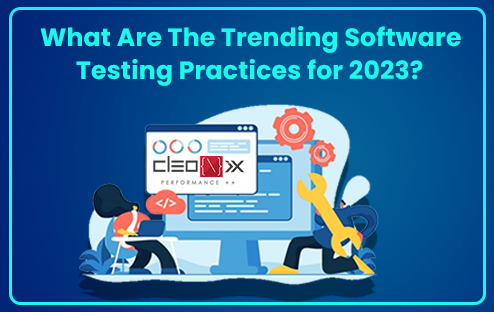
In the ever-evolving world of software development, staying up to date with the latest testing practices is crucial for ensuring the delivery of high-quality software products. As we delve into 2023, several emerging trends have caught the attention of software testers and quality assurance professionals. This blog post explores the cutting-edge software testing practices that are trending this year, offering insights into how they are reshaping the landscape of software testing and positively impacting the software development process.
- Test Automation with Artificial Intelligence: Artificial Intelligence (AI) and machine learning (ML) have gained significant traction in recent years, and their integration into software testing is becoming more prevalent in 2023. Test automation tools powered by AI and ML can analyze vast amounts of test data, identify patterns, and generate intelligent suggestions for improving test coverage and efficiency. These advanced technologies enable the creation of robust test suites, accelerating the testing process and enhancing the overall quality of software products.
- Shift-Left and Shift-Right Testing: The concepts of shift-left and shift-right testing have gained prominence as organizations strive to adopt agile and DevOps methodologies. Shift-left testing involves early involvement of testers in the software development lifecycle, allowing for the identification and resolution of defects at an earlier stage. Conversely, shift-right testing focuses on monitoring and testing in production environments to capture real-time user feedback and improve the product continuously. The combination of both approaches ensures better collaboration between development and testing teams and promotes a culture of continuous improvement.
- Performance Engineering and Testing: With the increasing complexity of software systems and the demand for optimal performance, performance engineering and testing have become crucial in 2023. Performance engineers collaborate closely with development and testing teams to identify potential bottlenecks, conduct load testing, and optimize system performance. Leveraging advanced tools and techniques, performance testing helps organizations assess their software’s scalability, responsiveness, and stability under various conditions, ensuring a seamless user experience.
- Shift towards Cloud-Based Testing: The widespread adoption of cloud technologies has transformed software testing practices. In 2023, there is a significant shift towards cloud-based testing solutions that offer scalability, flexibility, and cost-effectiveness. Cloud-based testing environments provide on-demand access to a wide range of devices, platforms, and configurations, allowing testers to validate software compatibility across diverse environments. Additionally, the cloud facilitates collaborative testing efforts, enabling distributed teams to work seamlessly and share resources.
- Security Testing for Enhanced Protection: As the number of cyber threats continues to rise, security testing has gained paramount importance in 2023. Organizations are increasingly focusing on identifying vulnerabilities, assessing risks, and conducting penetration testing to ensure robust security measures in their software applications. Advanced security testing tools and methodologies are employed to uncover potential security flaws, including injection attacks, cross-site scripting (XSS), and insecure authentication. Prioritizing security testing helps organizations build trustworthy and resilient software products.
- Test Data Management and Privacy: In an era where data privacy is of utmost concern, test data management has emerged as a significant practice in 2023. Testers are now tasked with ensuring the ethical use of data and complying with privacy regulations such as the General Data Protection Regulation (GDPR) and the California Consumer Privacy Act (CCPA). Robust data masking techniques, anonymization, and synthetic data generation methods are employed to protect sensitive customer information during testing while maintaining data integrity.
- Continuous Integration and Continuous Testing: Continuous integration (CI) and continuous testing (CT) have become integral parts of the software development process. In 2023, organizations strive to achieve faster release cycles without compromising quality. CI involves frequent code integration and automated build verification, ensuring that the software remains stable throughout the development lifecycle. Continuous testing complements CI by automating the execution of tests and providing real-time feedback on the quality of the software. This seamless integration of CI and CT allows for early bug detection, faster bug fixing, and overall improved software quality.
Conclusion:
In 2023, the field of software testing is witnessing exciting trends that are shaping the way organizations approach quality assurance. From AI-powered automation and shift-left testing to cloud-based testing and security measures, these practices are revolutionizing the software development process. With a focus on continuous integration and continuous testing, organizations can achieve faster release cycles without compromising on quality. By staying abreast of these trending practices, software testers and quality assurance professionals can contribute to delivering high-quality software products that meet the ever-growing demands of users and maintain a competitive edge in the market.
ALSO READ: AngularJS or ReactJS -Which One is Best for 2023?

Magento 2 is a popular eCommerce platform that offers businesses the ability to manage their online stores with ease. However, migrating to Magento 2 can be a daunting task, and there are many potential risks that businesses should be aware of before undertaking the migration process. In this blog post, we will discuss some common risks you can face when migrating to Magento 2 and provide some tips on how to mitigate them.
Data Loss
One of the most significant risks when migrating to Magento 2 is data loss. During the migration process, data can be lost due to various reasons, such as improper data mapping or incorrect data formatting. To mitigate this risk, it is essential to back up your data before starting the migration process. You should also perform a thorough data audit to identify any potential data issues and work to resolve them before the migration begins.
Downtime
Another common risk when migrating to Magento 2 is downtime. Downtime can occur when your website is unavailable due to maintenance or other issues, which can lead to a loss of revenue and damage to your brand reputation. To avoid downtime, you should plan your migration carefully and schedule it during a time when your website has the least traffic. Additionally, it is essential to work with experienced developers who can minimize downtime and ensure a smooth migration.
Extension Incompatibility
Magento 2 has a different architecture than Magento 1, and as a result, extensions that worked on Magento 1 may not be compatible with Magento 2. This can cause problems during the migration process, such as functionality loss or website crashes. To mitigate this risk, it is essential to identify all the extensions you are currently using and ensure that they are compatible with Magento 2. You may also need to find alternative extensions that are compatible with Magento 2 to replace any that are not.
Customization Issues
Another risk when migrating to Magento 2 is customization issues. If you have customized your website extensively, you may encounter issues during the migration process. Customizations that are not properly migrated can lead to website crashes, functionality loss, and other issues. To mitigate this risk, it is essential to thoroughly document all your customizations and work with experienced developers who can ensure that your customizations are properly migrated to Magento 2.
Cost Overruns
Migrating to Magento 2 can be costly, and there is a risk of cost overruns. This can happen due to unexpected issues during the migration process or changes in the scope of the project. To mitigate this risk, it is essential to create a detailed migration plan and budget that includes all the necessary resources and potential costs. You should also work with experienced developers who can help you identify potential cost overruns and find ways to minimize them.
SEO Issues
SEO is critical for any eCommerce website, and there is a risk of SEO issues when migrating to Magento 2. If not properly managed, the migration process can result in a loss of SEO ranking, which can lead to a significant decrease in traffic and revenue. To mitigate this risk, it is essential to work with experienced developers who can ensure that all your SEO settings are properly migrated to Magento 2. You should also perform a thorough SEO audit after the migration to identify and resolve any potential issues.
Training Issues
Migrating to Magento 2 can be a significant change for your team, and there is a risk of training issues. If your team is not properly trained on Magento 2, they may struggle to use the platform effectively, which can lead to a loss of productivity and revenue. To mitigate this risk, it is essential to provide your team with comprehensive training on Magento 2 before and after the migration. You should also work with experienced developers who can provide guidance and support during the training process.
In conclusion, migrating to Magento 2 can be a complex process, and there are several risks involved. However, with careful planning and the help of experienced developers, businesses can mitigate these risks and ensure a successful migration. It is essential to perform a thorough data audit, identify potential issues, and create a detailed migration plan and budget that includes all the necessary resources and potential costs. Working with experienced developers who can minimize downtime, ensure proper data migration, and provide comprehensive training for your team is also crucial. By taking these steps, businesses can make the transition to Magento 2 with confidence and avoid the potential risks that come with the migration process.
READ ALSO: Tips to Optimize Magento Cart Page for Better Conversion Rate

AngularJS and ReactJS are two of the most popular JavaScript frameworks for building web applications. Both are widely used by developers across the globe, and both have their own strengths and weaknesses. In this blog post, we will explore the differences between AngularJS and ReactJS and try to determine which one is best for 2023.
First, let’s take a look at AngularJS. AngularJS is a comprehensive framework for building complex, single-page web applications. It was first released in 2010 by Google and has since become one of the most popular frameworks for web development. AngularJS uses a declarative programming style and is based on the Model-View-Controller (MVC) architecture. It also comes with a range of features and tools that make it easier to build scalable and maintainable applications.
ReactJS, on the other hand, is a library for building user interfaces. It was developed by Facebook and was first released in 2013. Unlike AngularJS, ReactJS is focused on the View layer of an application and does not provide a complete MVC framework. Instead, ReactJS uses a component-based architecture, which makes it easier to build reusable UI components.
So, which one is better for 2023? Well, it really depends on your specific needs and requirements. AngularJS is a great choice if you need a complete framework for building complex web applications. It comes with a range of features, such as data binding, dependency injection, and testing tools, that make it easier to develop and maintain large-scale applications. AngularJS also has a large and active community, which means that there are plenty of resources and support available for developers.
On the other hand, ReactJS is a great choice if you are looking for a lightweight library for building user interfaces. Its component-based architecture makes it easier to build and reuse UI components, which can save you time and effort in the long run. ReactJS is also highly performant and can handle large amounts of data and complex UI interactions with ease. Additionally, ReactJS has a growing and active community, which means that there are plenty of resources and support available for developers.
Another factor to consider when choosing between AngularJS and ReactJS is your team’s skills and experience. If your team is already familiar with AngularJS, it may be easier and faster to continue using it rather than switching to a new framework like ReactJS. Similarly, if your team has experience with ReactJS, it may make more sense to stick with it rather than learning a new framework like AngularJS.
In terms of popularity, both AngularJS and ReactJS have a strong following and are widely used by developers. According to the State of JS 2020 survey, ReactJS is the most popular front-end framework/library, with 71% of respondents saying they have used it before. AngularJS came in third place, with 39% of respondents saying they have used it before. However, it’s worth noting that the survey also showed that ReactJS usage is growing faster than AngularJS usage.
Ultimately, the choice between AngularJS and ReactJS comes down to your specific needs and requirements. Both frameworks have their own strengths and weaknesses, and both can be used to build high-quality web applications. If you need a comprehensive framework for building complex web applications, AngularJS may be the better choice. If you are looking for a lightweight library for building user interfaces, ReactJS may be the better choice. Whichever framework you choose, make sure to take the time to learn it thoroughly and leverage the resources and support available from the community.
ALSO READ: Shopify or Magento Which One to Choose For Your eCommerce Development
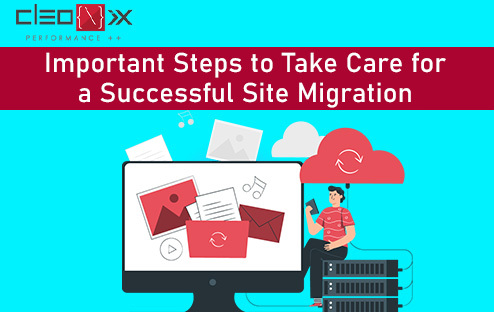
Site migration can be a daunting task, but it is a necessary one if you want to keep your website up-to-date, improve its performance, or change its hosting provider. However, if not done correctly, it can lead to a host of problems, including traffic loss, broken links, and lower search engine rankings. Therefore, it’s essential to take proper care during the migration process to ensure that everything goes smoothly. In this blog post, we’ll discuss some of the important steps you should take to ensure a successful site migration.
- Plan the migration carefully: Before starting the migration process, it’s important to plan everything carefully. This includes setting a migration date, creating a backup of your existing site, selecting a new hosting provider, and creating a migration plan.
- Test the new site before going live: Before you make your new site live, it’s crucial to test it thoroughly. This will help you identify any issues or bugs and fix them before your audience sees them. Testing includes checking for broken links, page speed, and mobile-friendliness, among other things.
- Redirect old URLs to new ones: During the migration process, the URLs of your pages may change. Therefore, it’s important to set up redirects to ensure that visitors who click on the old URLs are directed to the new ones. This will also help you retain your search engine rankings for those pages.
- Update internal links: After the migration, you’ll need to update internal links on your website to point to the new URLs. This will help visitors navigate your site and ensure that search engines can crawl your site effectively.
- Update external links: If your site has external links, such as backlinks from other websites, you’ll need to update them as well. This will help ensure that the links continue to work and that you retain any SEO value from those links.
- Notify search engines of the migration: Once your new site is live, it’s important to notify search engines of the migration. This can be done by submitting a sitemap or using Google Search Console to inform Google of the changes.
- Monitor traffic and rankings: After the migration, it’s important to monitor your website’s traffic and search engine rankings closely. This will help you identify any issues that may arise and take action to fix them.
- Address any issues promptly: If you notice any issues after the migration, such as broken links or a drop in search engine rankings, it’s important to address them promptly. This will help you maintain the integrity of your website and ensure that it continues to perform well.
- Communicate with your audience: Finally, it’s important to communicate with your audience about the migration. Let them know why you’re making the changes and how it will benefit them. This will help build trust and ensure that they continue to visit your site.
In conclusion, site migration can be a complicated process, but with proper planning and execution, it can be a success. By following the steps outlined above, you can ensure that your site migration is smooth, and your website continues to perform well. Remember to test thoroughly, update your URLs, notify search engines, and monitor your traffic and rankings to ensure that your website stays on top.
ALSO READ: Everything You Need To Know About Virtual Private Network (VPN)
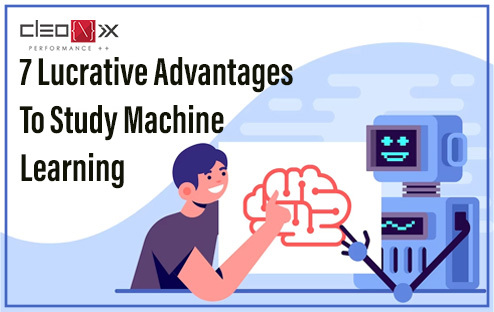
Machine learning is a rapidly growing field that has attracted a lot of attention in recent years. It involves using algorithms and statistical models to enable computer systems to improve their performance on a specific task through experience. Machine learning has become an essential tool for a wide range of industries, including healthcare, finance, retail, and transportation. In this blog post, we will discuss seven compelling reasons why you should study machine learning.
High demand for machine learning professionals
With the increasing adoption of machine learning in various industries, there is a growing demand for professionals with expertise in this field. According to a report by LinkedIn, machine learning engineer is the top emerging job in the US. Moreover, the report also states that the demand for this job has grown by 74% annually over the past four years. This high demand for machine learning professionals indicates that studying machine learning can lead to lucrative career opportunities.
Machine learning can solve complex problems
Machine learning is an excellent tool for solving complex problems that are difficult or impossible to solve using traditional methods. For example, machine learning can be used to identify patterns in large datasets that can be used to make predictions or inform decision-making. It can also be used to identify anomalies or outliers in data, which can be useful in fraud detection or cybersecurity.
Machine learning is applicable in various fields
Machine learning has applications in various fields, including healthcare, finance, retail, transportation, and more. In healthcare, machine learning can be used to develop predictive models that can help identify patients who are at risk of developing certain diseases. In finance, machine learning can be used to detect fraudulent transactions or to make more accurate predictions about stock prices. In retail, machine learning can be used to analyze customer behavior and make personalized product recommendations.
Machine learning is a valuable skill in data science
Data science is a growing field that involves using statistical and computational methods to extract insights from data. Machine learning is an essential tool for data scientists because it can be used to develop predictive models and analyze complex datasets. By studying machine learning, you can acquire the skills necessary to become a successful data scientist.
Machine learning is an important part of artificial intelligence
Artificial intelligence (AI) is a broad field that encompasses various technologies, including machine learning. Machine learning is an essential component of AI because it enables machines to learn from data and improve their performance over time. By studying machine learning, you can gain a better understanding of how AI works and how it can be applied to various fields.
Machine learning is a constantly evolving field
Machine learning is a rapidly evolving field, and new techniques and algorithms are constantly being developed. By studying machine learning, you can stay up-to-date with the latest developments in the field and ensure that your skills remain relevant.
Machine learning can help you develop critical thinking skills
Studying machine learning requires you to think critically and solve complex problems. This can help you develop valuable skills that are applicable in various fields. For example, critical thinking is essential in business, law, and healthcare.
In conclusion, machine learning is a rapidly growing field that offers many career opportunities and has applications in various fields. Studying machine learning can help you develop valuable skills and stay up-to-date with the latest developments in the field. Whether you are interested in pursuing a career in machine learning or simply want to learn more about this exciting field, there are many compelling reasons to study machine learning.
READ ALSO: Why Python is considered the best in Artificial Intelligence?
About the author
Cleonix Technologies
A professional Web Development Company is highly focused on providing world class and best in the industry standard services in every domain that we work upon.

 AJ 14, Salt Lake, Sector 2, Kolkata - 700091 |
AJ 14, Salt Lake, Sector 2, Kolkata - 700091 |  743 Virginia Ave NE Atlanta, GA 30306
743 Virginia Ave NE Atlanta, GA 30306










